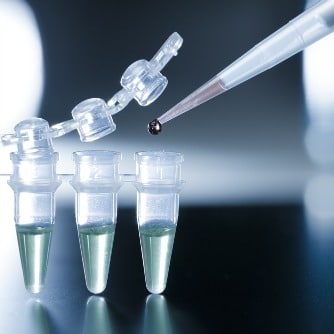Boston Children’s Hospital researchers have used pluripotent stem cells to generate blood-forming stem cells for the first time. This means it is possible to generate just about every type of cell in the human body. It is hoped this breakthrough will pave the way for research into the true causes of blood diseases and also to generate immune-matched blood cells that can be used for treatment.
About the Breakthrough
George Daley, the project’s senior investigator, states his group is close to generating legitimate blood stem cells inside of a dish. Daley is the dean of Harvard Medical School and heads the Boston Children’s Hospital’s Stem Cell Program research lab. He states the breakthrough is the result of two decades of work.
The cells generated from pluripotent stem cells are a combination of blood stem cells and other cells referred to as blood progenitor cells. The generated cells proved capable of spurring several types of human blood cells after being put in mice. This means genetic defects can be corrected to create functional blood cells by taking cells from patients suffering from genetic blood disorders and implementing gene editing. There is also the potential to obtain access to an unlimited amount of blood stem cells as well as blood by using cells from donors. The end result will be an augmentation of the blood supply for individuals who require transfusions.
The Quest to Produce Blood-Forming Stem Cells
Scientists have attempted to use human embryonic stem cells to generate blood-forming stem cells across the past couple decades. In 2007, the Daley lab worked in tandem with two other groups to spur the first pluripotent stem cells from skin cells by way of genetic reprogramming. However, it still was not possible to generate blood-forming stem cells.
Daley and his colleagues unified two prior approaches for the breakthrough. They exposed pluripotent stem cells to chemical signals that cue stem cells to segment into specific cells and tissues amidst embryonic development. The result was hemogenic endothelium, a tissue that triggers the rise of blood stem cells. The second component of the approach was the addition of genetic regulatory factors to move the hemogenic endothelium to a state in which blood forms. Daley’s group pinpointed five specific transcription factors that were essential for the creation of blood stem cells. A lentivirus was used to transmit the factors to the cells.
The final component of the unified approach was the implementation of genetically engineered hemogenic endothelial cells in mice. It only took a few weeks for a couple of the study’s animals to carry several types of human blood cells within their blood and bone marrow. Some of the mice were even capable of mounting a human immune response following vaccination. ES and iPS cells proved quite efficient at creating progenitor cells and blood stem cells after the new technique was applied. The research team is especially interested in iPS cells that provide the ability to derive cells from patients without impediment.
Summary
This breakthrough has made it possible to model a human being’s blood function in mice. This is an important step forward as it will now be much easier to obtain an intricate understanding of genetic blood diseases. You can read more about the breakthrough in the recently published edition of the popular journal Nature.




